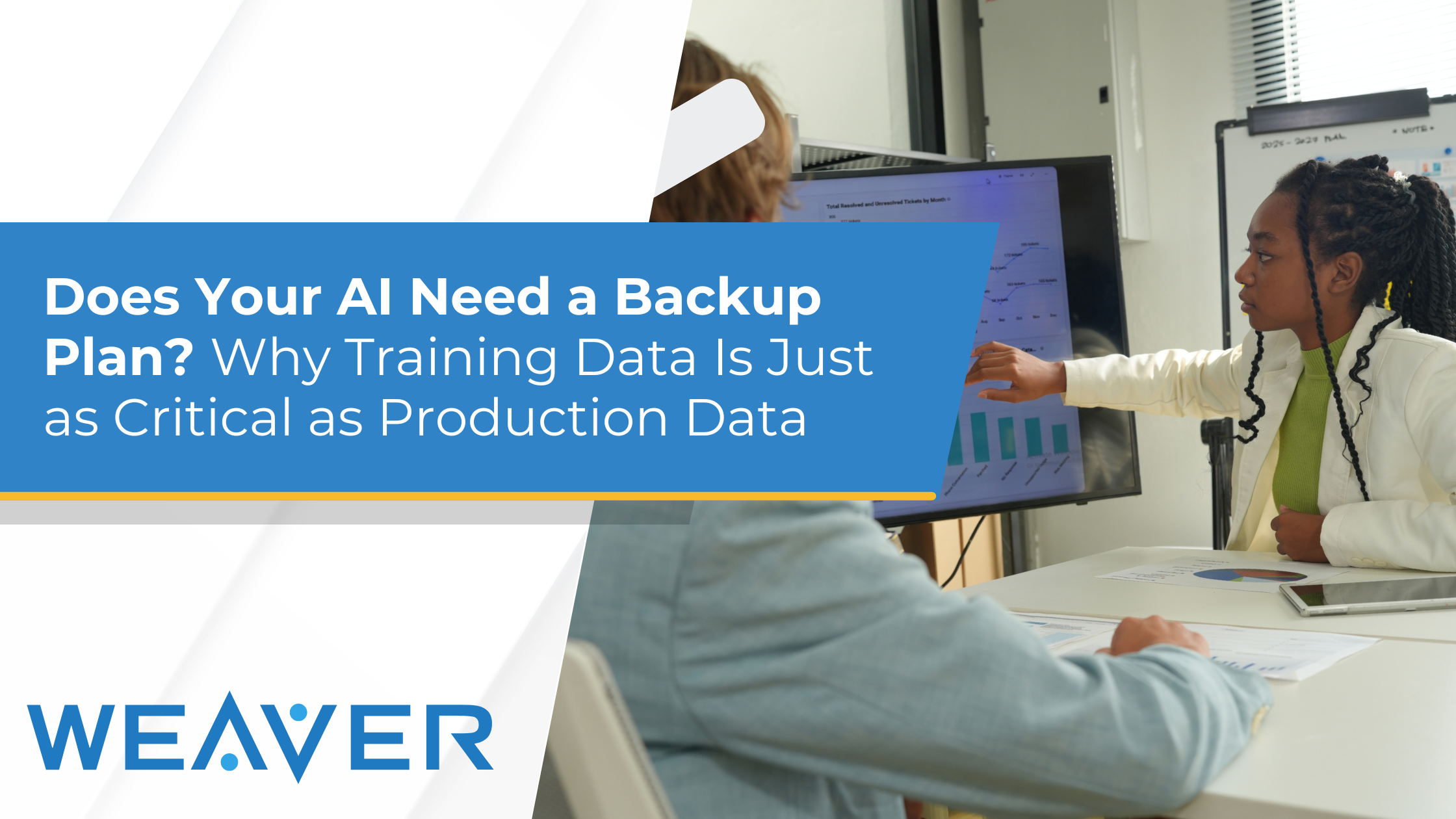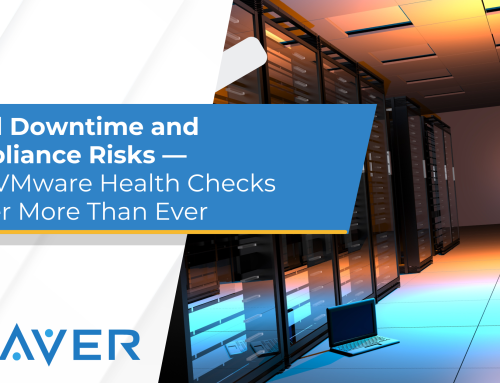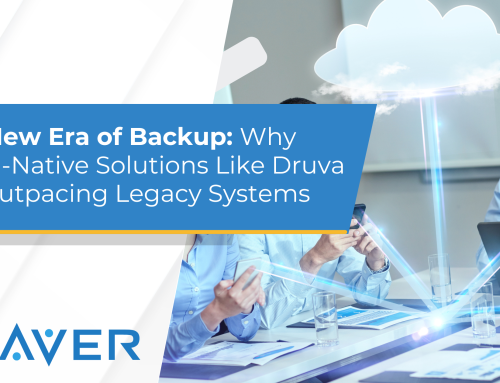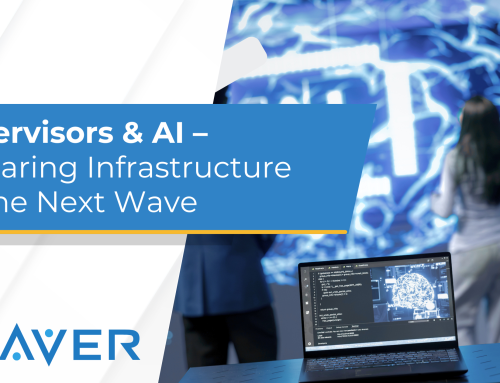AI models are only as strong as the data behind them. Yet most organizations unintentionally treat production data like a crown jewel… and training data like an afterthought.
As AI adoption accelerates — from computer vision to predictive analytics to LLM-powered workflows — training datasets have grown exponentially in size, complexity, and strategic value. They’re expensive to build, time-consuming to curate, and often impossible to fully recreate if lost.
Still, many environments lack a formal backup strategy for training data. And in 2025, that’s a costly mistake.
If your models rely on unique datasets, proprietary annotations, or custom labeling work, protecting your training data is just as important as protecting the production models that run your business.
Why Training Data Is Becoming a High-Value Asset
1. It’s Irreplaceable
Training datasets aren’t just collections of raw files — they’re the result of:
-
Data sourcing
-
Cleaning and preprocessing
-
Human labeling
-
Model iteration feedback
-
Proprietary logic and domain expertise
Lose it, and rebuilding may take months (or may not be possible at all).
2. It Drives Model Accuracy
A model is only as good as the data it was trained on. If you lose:
-
Labeled images
-
Annotation sets
-
Synthetic training data
-
Feature-engineered datasets
-
Versioned checkpoints
…you lose the ability to replicate or improve your AI models.
3. It’s a Major Competitive Advantage
Training data often contains the “secret sauce”:
-
Industry-specific anomalies
-
Unique environmental conditions
-
Operational edge cases
-
Customer behavior patterns
It is intellectual property — and must be protected like it.
4. It’s a Target
Cyber threats are increasingly AI-aware. Attackers know that compromising training data can:
-
Poison models
-
Corrupt outcomes
-
Destroy competitive positioning
-
Disrupt business operations
This is why AI environments now require both production AND training data protection.
How Training Data Loss Impacts Your AI Systems
Organizations often underestimate the ripple effects. Losing training data can cause:
✔ Inability to retrain or fine-tune models
Without your dataset, you can’t evolve with new threats, trends, or operational needs.
✔ Loss of regulatory or auditability evidence
Emerging AI standards (NIST, EU AI Act, etc.) require full lineage.
✔ Misalignment between development and production
If training data disappears or corrupts, your models drift — fast.
✔ Massive downtime for AI-driven operations
From computer vision to automation, the hit to productivity can be immediate.
✔ Significant financial loss
Rebuilding data labeling alone can cost tens or hundreds of thousands of dollars.
Your training data is part of your AI infrastructure — not just a temporary development asset.
Training Data Needs the Same Backup Strategy as Production Data
A modern AI-ready data protection approach should secure:
✔ Versioned training datasets
Every iteration matters — especially for audit trails and model reproducibility.
✔ Annotations and labels
These are the most expensive components to rebuild.
✔ Model checkpoints
Critical for rollback, fine-tuning, and model drift correction.
✔ Synthetic data generators
If lost, you lose the multipliers that expand your dataset.
✔ Feature engineering pipelines
These represent your organization’s domain intelligence.
✔ Observability and lineage metadata
Increasingly required for compliance and responsible AI deployments.
A strong strategy covers the entire AI lifecycle — not just the models in production.
Why Organizations Are Getting Caught Off Guard
Many teams assume:
“The training dataset is stored somewhere… we’re fine.”
But most AI workflows involve:
-
Local machines
-
Temporary storage
-
Untracked iterations
-
Manual labeling folders
-
Distributed teams
-
Lack of centralized governance
The result: massive blind spots in AI data protection.
As AI moves from experimentation to enterprise integration, these gaps quickly become high-risk.
The Smarter Approach: Treat Training Data Like Tier-1 Infrastructure
A modern AI protection strategy should deliver:
1. Centralized, scalable storage
Huge datasets shouldn’t live on desktops or scattered shares.
2. Immutable and versioned backups
Protects against ransomware, corruption, and accidental overwrites.
3. Automated lineage tracking
Required for many compliance frameworks.
4. Rapid recovery
Because AI downtime is business downtime.
5. Secure access controls
Not everyone should have the ability to modify or delete your training assets.
The organizations thriving in AI are the ones building an AI-ready data foundation, not just AI models.
Final Thoughts
If AI is part of your strategy — now or in the near future — then your training data must be protected with the same rigor as production data. It’s a critical asset, a competitive differentiator, and a requirement for responsible AI deployment.
A backup plan is no longer optional — it’s a core part of your AI lifecycle
Protect your AI investment before issues arise.
Contact Weaver today to build a reliable backup strategy for your training and production data.







